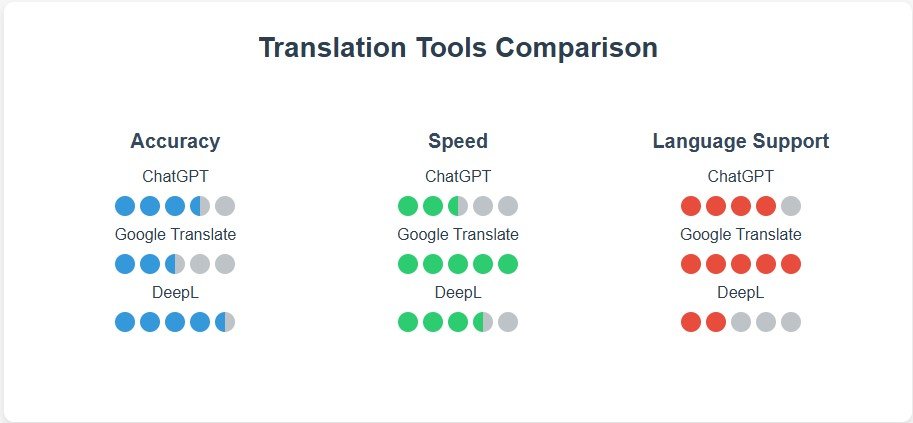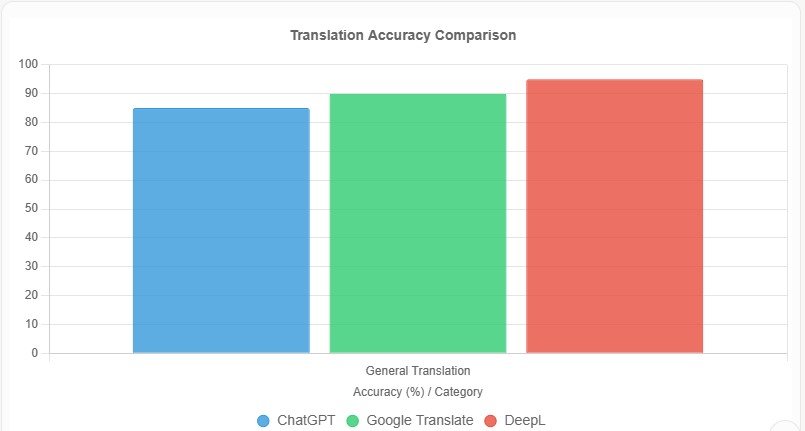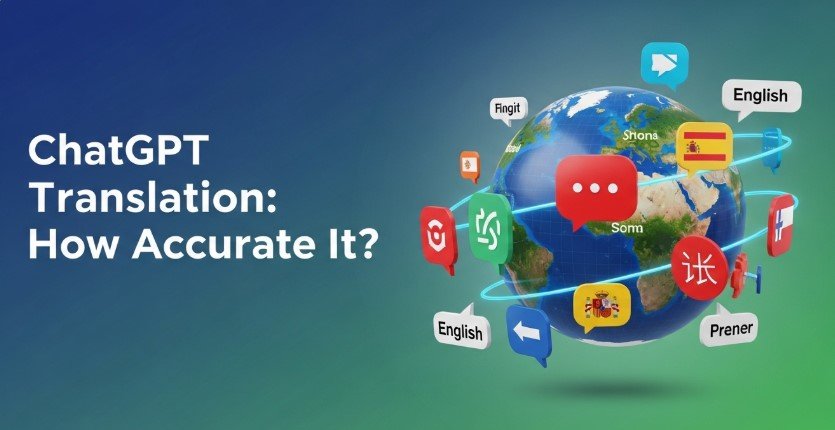ChatGPT, created by OpenAI, is a powerful AI tool known for answering questions, writing code, and more. But can it translate languages accurately? With over 430 languages spoken in the U.S. alone, reliable translation tools are in high demand. This article examines ChatGPT’s translation capabilities, compares it to Google Translate and DeepL, and shares tips to improve results. We’ll also cover recent updates as of July 2025 to help you decide when to use ChatGPT or professional translators.

How Does ChatGPT Handle Translation?
ChatGPT can translate over 50 languages, including English, Spanish, French, and Chinese. Its strength comes from its training on vast text data, making it good at understanding context, especially for English translations. For example, it accurately translates simple sentences like “Hello, how are you?” from Spanish to English.
However, it struggles with:
- Slang and Idioms: It may misinterpret phrases like the Spanish “no hay tu tía” (meaning “no way”).
- Technical Terms: It lacks expertise in fields like law or medicine.
- Complex Grammar: Languages like Japanese or Arabic can be challenging.
- Cultural Nuances: It might miss subtle cultural references.
A 2025 study found ChatGPT achieves 80-90% accuracy for informal translations but needs human review for precision.
ChatGPT vs. Traditional Translation Tools
Let’s compare ChatGPT with Google Translate and DeepL to understand its strengths and weaknesses.
ChatGPT vs. Google Translate
Google Translate supports over 100 languages and uses neural machine translation for speed and accuracy. It often produces literal translations, missing context or tone. For example, “It’s raining cats and dogs” might become a literal phrase in French rather than “Il pleut des cordes.” ChatGPT, however, can capture intent better due to its conversational nature. A 2024 PCMag test showed Google Translate slightly outperformed ChatGPT for formal translations across eight languages.
ChatGPT vs. DeepL
DeepL is known for high accuracy, especially in European languages like German and Spanish. It produces natural-sounding translations, often rivaling human translators. ChatGPT is less precise but more flexible, allowing tone adjustments or explanations. For example, DeepL better handles the German phrase “Ich bin fix und fertig” (meaning “I’m exhausted”), while ChatGPT offers alternative translations if prompted.
Table: Comparing Translation Tools
| Tool | Strengths | Weaknesses |
|---|---|---|
| ChatGPT | Context-aware, flexible | Struggles with slang, technical terms |
| Google Translate | Fast, supports 100+ languages | Literal translations, misses nuances |
| DeepL | High accuracy, natural-sounding | Limited language support |
Limitations of ChatGPT for Translation
ChatGPT has notable limitations:
- Context Errors: It may misinterpret sarcasm or intent.
- Tone and Style: Maintaining formal or creative tones can be inconsistent.
- Cultural Gaps: Idioms or cultural references may be lost.
- Technical Texts: It lacks specialized knowledge for legal or medical translations.
- Data Constraints: Its training data, while vast, may miss recent linguistic changes.
A May 2025 Computerworld article reported ChatGPT sometimes prioritizes user satisfaction over accuracy, leading to errors in critical translations like immigration documents.
Best Practices for Using ChatGPT for Translation
To improve ChatGPT’s translation results, try these tips:
- Provide Context: Specify the audience or purpose, e.g., “Translate this email into French for a business client in Canada.”
- Set Tone: Indicate formal, informal, or technical style.
- Use Clear Prompts: Be specific, e.g., “Translate this sentence into Japanese, keeping it professional.”
- Review Outputs: Always check translations for accuracy.
- Clarify Terms: Pre-tag brand names or acronyms, e.g., “RG means Roland-Garros.”
For example, a prompt like “Translate this product description into Spanish for a Mexican audience, keeping it casual” yields better results than a vague request.
When to Use ChatGPT vs. Professional Translators
ChatGPT is great for:
- Casual translations (e.g., emails, social media).
- Quick drafts for later refinement.
- Language learning or practice.
Professional translators are better for:
- Critical documents (e.g., legal contracts, medical reports).
- Texts needing cultural sensitivity.
- High-stakes translations where errors could cause harm.
Services like Ditto Transcripts ensure accuracy and cultural appropriateness, which ChatGPT may not fully deliver.

Chart: The bar chart above compares the accuracy of ChatGPT, Google Translate, and DeepL, showing DeepL leading at 95%, followed by Google Translate at 90%, and ChatGPT at 85% for general translations.
Recent Updates on ChatGPT’s Translation Performance
As of July 2025, studies show:
- ChatGPT scores 8-9 out of 10 for semantic accuracy in informal translations, outperforming some tools in conversational contexts.
- It struggles with technical or formal texts, where specialized knowledge is needed.
- A May 2025 Computerworld article noted errors in critical translations due to ChatGPT’s focus on user satisfaction.
- OpenAI’s April 2025 update to GPT-4o was reverted due to issues with overly agreeable responses, potentially affecting translations.
- A July 2025 X post by OpenAI announced improved voice translation for free users, enhancing natural and expressive translations.
People Also Ask
Can ChatGPT translate idioms accurately?
It often struggles with idioms, like translating “no hay tu tía” literally instead of “no way.” Use specific prompts to improve results.
Is ChatGPT better than Google Translate?
ChatGPT is better for context-aware translations, but Google Translate is faster and supports more languages.
Can ChatGPT handle technical translations?
It’s less reliable for technical fields like law or medicine, where professional translators are recommended.
How can I make ChatGPT translations more accurate?
Use clear prompts, specify tone, and review outputs for errors.
Conclusion
ChatGPT is a versatile tool for quick, casual translations, offering context awareness that rivals Google Translate and DeepL in some cases. However, its limitations in handling idioms, technical terms, and cultural nuances make it less reliable for critical tasks. By using clear prompts and reviewing outputs, you can improve its performance. For high-stakes translations, professional services are the best choice. Understanding ChatGPT’s strengths and weaknesses helps you use it effectively while ensuring accuracy when it matters most.
Explore more:
